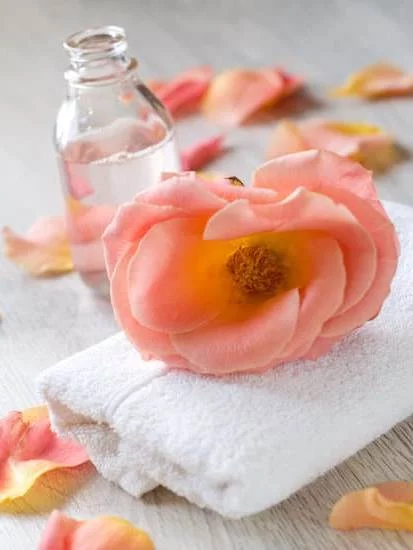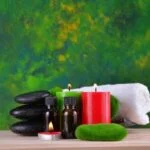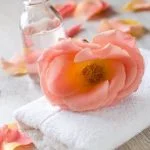Aromatherapy oils have long been used for their therapeutic and aromatic benefits, and the popularity of these natural remedies continues to grow. The practice of using essential oils for healing and relaxation has become an integral part of self-care routines for many individuals.
But have you ever wondered how do you make aromatherapy oils at home? In this comprehensive guide, we will explore the art of creating your own custom blends of essential oils and harnessing their powerful properties for various purposes.
Before delving into the process of making aromatherapy oils, it is important to first understand what exactly these oils are and the benefits they offer. Aromatherapy oils, also known as essential oils, are highly concentrated plant extracts that capture the essence and aroma of a specific plant.
These potent substances are renowned for their therapeutic properties, such as promoting relaxation, reducing stress, easing discomfort, and even boosting energy levels. In addition to their aromatic appeal, essential oils have been used for centuries in traditional medicine practices due to their diverse range of healing effects.
While there is a wide array of commercially available aromatherapy oils on the market today, making your own allows you to have full control over the ingredients and customization of your blends. Additionally, creating homemade aromatherapy oils can be a fulfilling and creative endeavor that adds a personal touch to your self-care routine.
Whether you are new to the world of aromatherapy or seeking to expand your knowledge in crafting custom oil blends, this guide will provide you with all the information needed to embark on this rewarding journey. From understanding the basics of aromatherapy oils to learning about different extraction methods and blending techniques, we will empower you to create unique and effective essential oil blends tailored to your individual needs.
The Basics of Aromatherapy Oils
Understanding Different Types of Aromatherapy Oils
When it comes to aromatherapy oils, there is a wide range of options to choose from. Some of the most commonly used essential oils in aromatherapy include lavender, peppermint, eucalyptus, tea tree, and citrus oils such as lemon and orange. Each essential oil has its own unique scent and therapeutic properties. For example, lavender is often used for relaxation and stress relief, while eucalyptus is known for its respiratory benefits.
Importance of Choosing High-Quality Essential Oils
The effectiveness of aromatherapy oils greatly depends on the quality of the essential oils used. It is important to select pure, high-quality essential oils that are free from synthetic additives or contaminants. Look for reputable suppliers that provide detailed information about the sourcing and production methods of their essential oils. Authentic essential oils retain their natural aromatic compounds and therapeutic benefits, making them ideal for use in aromatherapy.
Methods of Using Aromatherapy Oils
Aromatherapy oils can be used in a variety of ways to reap their benefits. The most common methods include diffusing the oils using an essential oil diffuser, applying them topically by diluting with a carrier oil and massaging into the skin, or inhaling the aroma directly from the bottle or through steam inhalation. Each method offers different levels of intensity and absorption, allowing individuals to customize their aromatherapy experience based on their preferences and needs.
Choosing the Right Essential Oils
When it comes to making your own aromatherapy oils, selecting the right essential oils is crucial in achieving the desired therapeutic benefits. With a wide variety of essential oils available, each with its own unique properties and uses, it can be overwhelming to choose the right ones for your needs. Understanding the specific qualities of different essential oils and their therapeutic benefits is key to creating effective blends for aromatherapy.
Selecting Essential Oils for Specific Purposes
The first step in choosing essential oils for aromatherapy is identifying the purpose or benefit you are seeking. Whether it’s relaxation, stress relief, boosting energy, or alleviating specific ailments, there are specific essential oils known for their effectiveness in addressing these concerns. For instance, lavender and chamomile are renowned for their calming and relaxation properties, while citrus oils like lemon and orange are uplifting and energizing.
Understanding Essential Oil Properties and Therapeutic Benefits
Each essential oil possesses unique properties that contribute to its therapeutic effects. Some essential oils have anti-inflammatory or antibacterial properties, while others may be known for their calming or uplifting effects. Understanding these properties can help you select the right essential oils for your intended use. For example, eucalyptus oil is commonly used for respiratory support due to its decongestant properties, while peppermint oil is known for its ability to relieve headaches and improve focus.
Tips on Where to Purchase High-Quality Essential Oils
When selecting essential oils for aromatherapy, it’s important to choose high-quality, pure essential oils to ensure their effectiveness and safety. Look for reputable suppliers that offer pure, undiluted essential oils without any synthetic additives or fillers. While there are various sources from which you can purchase essential oils – including specialty stores, online retailers, or directly from manufacturers – it’s recommended to research the reputation and quality standards of the supplier before making a purchase.
By understanding the specific purposes of different essential oils, their therapeutic properties, and where to obtain high-quality options, you can make informed choices when selecting essential oils for your homemade aromatherapy blends.
Exploring Different Properties
One aspect of choosing the right essential oil involves exploring different aroma profiles and therapeutic properties. Each oil has its own distinct scent characteristics ranging from floral and herbal scents to spicy or woody fragrances. Additionally.
Sourcing High-Quality Oils
Quality matters when it comes to purchasing essential oils as low-grade options may not provide desired results or even pose potential health risks.
Considering Specific Needs
Recognize individual needs varies from person to person so take into account preferences in order cater an aromatherapy blend accordingly.
As such familiarity with various factors play into decision-making process when it comes choosing appropriate essntial oiuls.
Supplies Needed for Making Aromatherapy Oils
When it comes to making your own aromatherapy oils, it’s important to have the right supplies and equipment on hand. One of the essential items you’ll need is a selection of high-quality essential oils. These oils are the foundation of any aromatherapy blend and are responsible for providing the therapeutic benefits associated with aromatherapy. It’s crucial to choose pure, natural essential oils from reputable suppliers to ensure their effectiveness and safety in use.
In addition to essential oils, you’ll also need carrier oils, such as sweet almond oil, jojoba oil, or coconut oil. Carrier oils are used to dilute the potency of essential oils and make them safe for topical application. Glass bottles with tight-fitting lids are necessary for storing your homemade aromatherapy oils.
These bottles help protect the integrity of the oils by preventing exposure to light and air. Finally, labels for your bottles are essential for keeping track of your custom blends and their intended uses.
Proper storage containers are just as important as the essential oils themselves when it comes to making aromatherapy oils at home. Essential oils can be sensitive to environmental factors like light and heat, so storing them in dark-colored glass bottles in a cool, dark place is ideal.
| Supplies | Details |
|---|---|
| Essential Oils | Choose pure, natural essential oils from reputable suppliers. |
| Carrier Oils | Sweet almond oil, jojoba oil, or coconut oil can be used as carrier oils. |
| Glass Bottles | Tight-fitting lids and dark-colored glass are ideal for storing aromatherapy oils. |
| Labels | Necessary for keeping track of custom blends and their intended uses. |
Methods of Making Aromatherapy Oils
Making aromatherapy oils at home can be a rewarding and cost-effective way to enjoy the benefits of essential oils. There are several methods of extracting essential oils from plants, each with its own unique process and considerations. One of the most common methods is steam distillation, which involves using steam to extract the volatile compounds from plant material. This method requires specialized equipment such as a still or distillation kit, making it suitable for more advanced DIY enthusiasts.
Another method of making aromatherapy oils is cold-pressing, which is typically used for citrus fruits and other oil-rich plant materials. This process involves applying mechanical pressure to the plant material to squeeze out the essential oil. Cold-pressing is relatively simple and can be done at home with the right equipment, such as a manual or electric oil press.
Solvent extraction is another method used to make aromatherapy oils, particularly for delicate flowers and plant materials that do not yield their essential oils easily through steam distillation or cold-pressing. This process involves using a solvent, such as alcohol or hexane, to dissolve the essential oil compounds from the plant material. The resulting solution is then separated from the plant material and evaporated to leave behind the pure essential oil.
Whichever method you choose for making aromatherapy oils at home, it’s important to follow safety precautions and best practices. Proper ventilation and protective gear should be used when working with potentially hazardous solvents, and care should be taken to avoid contamination during the extraction process. Additionally, it’s crucial to ensure that the plant material used for extraction is clean and free from pesticides or other contaminants that could affect the quality of the final product.
Overall, learning how to make aromatherapy oils at home can provide you with a deeper appreciation for these natural remedies while allowing you to create custom blends tailored to your specific needs and preferences. Whether you’re drawn to the art of steam distillation, cold-pressing, or solvent extraction, experimenting with different methods can open up a world of aromatic possibilities right in your own kitchen or workshop.
Blending and Customizing Aromatherapy Oils
When it comes to making your own aromatherapy oils, understanding the art of blending and customizing is essential. Blending allows you to create unique scents and therapeutic properties tailored to your specific needs. But how do you make aromatherapy oils that are customized to your preferences?
One approach to blending aromatherapy oils is to start by understanding the aroma profiles and therapeutic benefits of different essential oils. For example, if you want to create a relaxing blend, you might consider using lavender, chamomile, and bergamot essential oils. On the other hand, if you’re looking for an energizing blend, oils like peppermint, rosemary, and eucalyptus can be a good combination.
To customize your aromatherapy oils, it’s important to experiment with different combinations and concentrations of essential oils. Keep track of the recipes you create so that you can replicate or adjust them in the future based on what works best for you. Remember that a little goes a long way with essential oils, so start with small amounts and adjust as needed.
In addition to creating custom blends for personal use, many individuals also enjoy making aromatherapy oil blends as gifts for friends and family. This personalized touch allows you to share the benefits of aromatherapy with others while showcasing your creativity in crafting unique scents. By understanding the properties of different essential oils and experimenting with various combinations, you can enhance your well-being through the art of blending and customizing aromatherapy oils.
| Blending Tips | Benefits |
|---|---|
| Understand aroma profiles & therapeutic benefits | Create unique scents tailored to specific needs |
| Experiment with different combinations & concentrations | Enhance well-being through personalized blends |
| Create personalized gifts for friends & family | Showcase creativity in crafting unique scents |
Storing and Using Aromatherapy Oils
Once you have successfully made your own aromatherapy oils, it is crucial to understand the proper methods for storing and using them to maximize their effectiveness and shelf life. Improper storage can lead to the degradation of essential oils, causing them to lose their therapeutic properties.
To preserve the quality of your homemade aromatherapy oils, it is essential to store them in a cool, dark place away from direct sunlight and heat. Exposure to these elements can cause the oils to deteriorate quickly.
When it comes to using aromatherapy oils, there are several methods that can be employed to experience their benefits. One of the most popular ways is through diffusion, where the oils are dispersed into the air using a diffuser. This allows for easy inhalation of the aromatic molecules, providing a range of therapeutic effects such as relaxation, stress relief, or improved focus.
Additionally, aromatherapy oils can also be applied topically by diluting them with a carrier oil and massaging them onto the skin. Another method is adding a few drops of essential oil into bath products like bath salts or liquid soap for a luxurious and aromatic bathing experience.
When using aromatherapy oils at home, it is important to observe safety considerations and usage guidelines. Essential oils are highly concentrated substances and should not be used undiluted on the skin or ingested without proper guidance from a qualified aromatherapist or healthcare professional.
Furthermore, certain essential oils may have contraindications for individuals with specific health conditions or those who are pregnant or nursing. It is always advisable to conduct thorough research or seek advice before using any new essential oil for its intended purpose.
Conclusion
In conclusion, the art of making aromatherapy oils offers a rewarding and fulfilling experience for those seeking to harness the therapeutic benefits of essential oils. By understanding the basics of aromatherapy oils and selecting high-quality essential oils, individuals can create custom blends tailored to their specific needs and preferences. The benefits of making your own aromatherapy oils extend beyond personal use, as it allows for greater control over the quality and purity of the oils being used.
Exploring the world of aromatherapy oil making opens up a realm of endless possibilities for relaxation, stress relief, energy boosting, and overall well-being. It also provides an avenue for creativity and self-expression as individuals experiment with different combinations of essential oils to achieve their desired aromatic experience. Embracing the art of aromatherapy oil making empowers individuals to take charge of their own wellness journey and promotes a deeper understanding and appreciation for the natural healing properties of plants.
As readers continue to delve into the world of aromatherapy oil making, it is important to remember that learning is an ongoing process. Additional resources such as books, workshops, or online courses can further enhance one’s knowledge and skills in this practice. By continuing to educate oneself on the various aspects of aromatic therapy oil making, individuals can expand their repertoire of blends and deepen their connection with this ancient art form.
Whether one is new to aromatherapy or a seasoned enthusiast, creating custom blends of essential oils is a gratifying experience that not only enhances emotional well-being but also nurtures a sense of mindfulness in daily life. Aromatherapy oil making allows individuals to connect with nature in a profound way while reaping the numerous physical and emotional benefits that these natural substances offer.
Frequently Asked Questions
How Do You Make Aromatherapy Oil at Home?
To make aromatherapy oil at home, you can start by choosing a carrier oil such as almond, coconut, or jojoba oil. Then, add a few drops of your preferred essential oil to the carrier oil and mix well. Store the mixture in a dark glass bottle to preserve its potency.
How Are Aromatherapy Oils Made?
Aromatherapy oils are made through a process called steam distillation. This method involves using steam to extract the essential oils from plants or flowers. The steam causes the plant’s cells to burst open, releasing their aromatic compounds, which are then collected and condensed into an essential oil.
What Is the Process of Making Essential Oils?
The process of making essential oils begins with harvesting the plant material at the peak of its potency. The next step is typically steam distillation, where the plant material is exposed to steam to release its aromatic compounds.
After extraction, the essential oil is separated from any leftover water or plant matter before being bottled for use in aromatherapy and other applications.

Are you looking for a natural way to improve your health and wellbeing?
If so, aromatherapy may be the answer for you.





